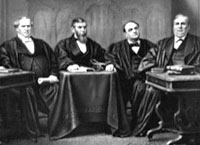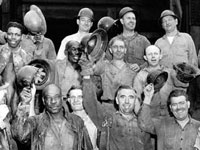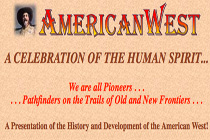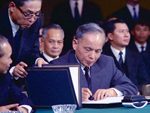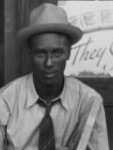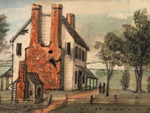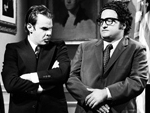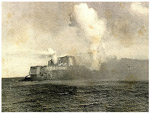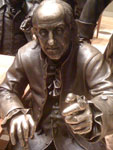Memoirs v. Tapes consists primarily of a web-published essay on the Nixon White House Tapes from between October 1972 and February 1973. These tapes were released from the Nixon Library as recently as 2008 through 2010, making them quite new to the public. As a text-heavy resource, and in consideration of the complexity of the questions the content raises, it is likely best used with high school students.
The essay is divided into seven sections and an accompanying appendix. The key issue under discussion is the position of Nixon and Kissinger on the 1972 Christmas bombing of North Vietnam. Nixon's memoirs state that he only reluctantly agreed to Kissinger's eagerness to bomb North Vietnam. In contrast, Kissinger notes that while he was pro-bombing, Nixon generally agreed with him, rather than only coming to the decision at a point of supposed necessity. Most sections of the website are accompanied by audio clips of the actual decision-making conversations; maps; documents such as letters, address drafts, and cables; and video clips.
The Nixon Presidential Library and Museum recognizes that the audio clips can be difficult to understand. As a result, they have prepared a short list of tips to help listeners get the most from the sources. In addition, each audio clip has an accompanying log link. The log lists, in bullet form, the topics of conversation covered in the clip.
The conclusion offers a set of five questions to consider after having perused the site and its resources. The questions, such as "What role did the convening of a new Congress play in December 1972 decisions about ending the war?," are, as noted previously, likely most appropriate for high school classrooms. However, it is possible that they may also be of use in middle school, depending on the engagement and ability levels of students.
Finally, the appendix offers suggested readings, as well as additional documents, audio and video clips, and photographs which may be of interest.
